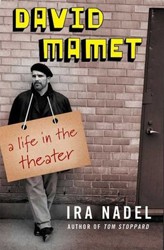Irving Thalberg’s funeral in 1936 filled Wilshire Boulevard Temple in Los Angeles with a thousand mourners while a crowd of some 8000 onlookers stood along the sidewalk outside. One of Hollywood’s elect, Thalberg had overseen the production of over a hundred movies and was married to one of the era’s great stars, Norma Shearer. When he died he was just 37 years old.
As if in a 20th century fairy tale, Thalberg was tapped at the age of 19 to be the personal assistant to Universal Studios’ Carl Laemmle, and was running that studio at age 21. He went to work for Louis B. Mayer as vice-president in charge of production at the age of 23. Thalberg not only epitomized Hollywood of the “dream factory” era, he virtually invented the process of mass-producing motion pictures. He also intuitively understood storytelling and the making of film stars. In his relentless pursuit of a superior product he spent great sums on “prestige” films while keeping his eye on the bottom line.
Mark Vieira’s 2008 book Hollywood Dreams Made Real surveyed the Thalberg era at MGM largely through photographs. Here he details the producer’s life, with the benefit of private access to Shearer’s unpublished memoirs. There are glimpses of their loving marriage, but Thalberg’s work consumed his life, and this biography is largely the story of the films he made. Vieira describes them all — and the attendant backstage politics — in detail. This is a sympathetic, diligent, and intelligent account of a wondrous era in Hollywood that has now receded nearly beyond living memory.
Bob Goldfarb is President Emeritus of Jewish Creativity International.




